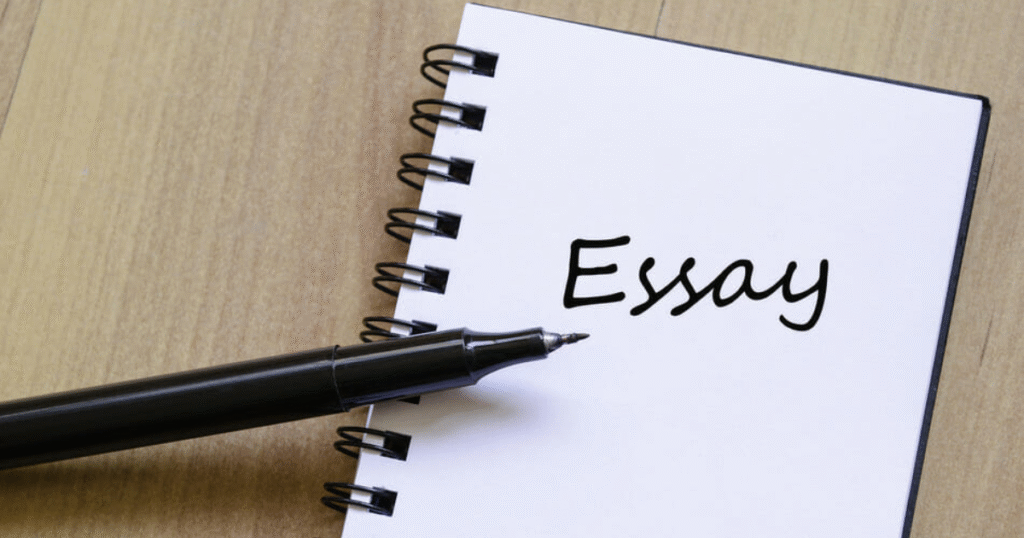Let us face it: writing an Essay Outline can be stressful, particularly if you are unclear about where to start. The difficult aspect is arranging the thoughts that may be circling in your mind. An essay outline can help with that.
You are in the proper place if you are not sure how to do an outline for an essay. We will examine it in detail in this article. No technical terms, no complex theories; just an easy-to-understand approach that everyone can use.
Why Essay Outline Are Worth the Effort
Despite outlines seeming like an exhausting assignment your teacher gives to slow you down, they are one of the most effective tools available to writers. Consider them your essay’s architectural blueprint. Without one, your thoughts may become disorganized, unclear, or even illogical.
An essay outline helps you:
- Put your ideas in a logical order.
- Check that your thesis is supported in each paragraph.
- Do not repeat anything and stay on topic.
- Simplify and speed up the writing process.
Outlining will make writing an Essay Outline easier, not harder, once you get used to it.

Identify the Type and Purpose of Your Essay Outline
When beginning the outline, decide what kind of essay you are writing. Different organizational strategies are needed for different kinds of essays. For example:
- Argumentative essay: Its purpose is to convince the reader of a particular viewpoint.
- Expository Essay: An expository essay uses reasoning and facts to explain a subject.
- Narrative Essay: Tells a story, often in chronological order.
- Descriptive Essay: Focuses on creating a vivid image with sensory details.
Your essay outline should be customized to fit the rhythm and flow of each category. For instance, a narrative essay will concentrate more on event sequencing, whereas an argumentative essay might need a part for objections.
Create a Strong Thesis Statement
The central idea of your essay is your thesis statement. It is the core claim or argument that the remainder of your Essay Outline will support. A strong thesis should be topic-specific, debatable, and relevant.
Let’s say you’re writing an Essay Outline about urban sustainability. Your thesis might be
“Transitioning to renewable energy in urban centers is essential for reducing carbon emissions and promoting long-term environmental sustainability.”
This statement presents the main argument and sets the direction for your supporting points, making it a strong foundation for your thesis structure.
Build Your Essay Outline Structure
The interesting phase is about to begin: creating the actual outline. Your points will be arranged here to support your thesis and flow organically. Generally speaking, a
traditional essay outline structure includes
Introduction
Get your essay off to a great start. To captivate readers, provide some context, and make your point clear, use a hook.

Body Paragraphs
The majority of your essay will consist of them. The thesis should be supported by a single idea in every paragraph.
Let us explore this section:
Body Paragraph Format:
- The main idea
- Details that provide evidence (facts, statistics, examples)
- Observation or justification
- Move on to the next paragraph.
Conclusion
Wrap up by restating your thesis, summarizing key points, and leaving the reader with a final thought.
Flesh Out Each Section with Supporting Points
It is time to add substance when the structure has been defined. Make a note of the specific evidence, examples, or supporting details you wish to use in each paragraph. When it comes time to write, this will serve as a rough draft of your ideas and keep you focused.
Here’s what that might look like in action:
Essay Topic: Renewable Energy in Cities
Thesis: Cities must transition to renewable energy to reduce carbon emissions and support sustainable living.
Outline Sample:
- Introduction
- Hook: More than 70% of carbon emissions worldwide come from urban areas.
- Background: Urban pollution is a result of population development and industrialization.
- Thesis: Cities must adopt renewable energy to address climate change and ensure a sustainable future.
II. Body Paragraph 1—The Environmental Impact of Cities
- Topic sentence: Climate change occurs primarily in urban areas.
- Evidence: EPA and UN report on urban emissions.
- Analysis: Why cities need to lead in the shift toward renewables.
III. Body Paragraph 2 – Benefits of Renewable Energy
- Topic sentence: Renewable energy reduces emissions and lowers costs.
- Example: Solar power initiatives in San Diego.
- Evidence: Decrease in energy bills and improved air quality.
- Analysis: How this proves the viability of renewable sources.
IV. Body Paragraph 3 – Implementation Through Policy
- Topic sentence: Effective policies are key to making renewable energy accessible.
- Example: Tax incentives and green infrastructure programs.
- Analysis: Government’s role in accelerating change.
V. Conclusion
- Restate the thesis in new words.
- Summarize main points.
- Call to action: Insist that residents and city planners give renewable energy top priority.

Adapt and Revise Your Outline as You Go
There is a widespread misunderstanding that an outline is complete once it is written. False! As you conduct research, generate ideas, or even compose portions of your Essay Outline, your outline should change.
To increase flow, do not be scared to rearrange your supporting details, introduce fresh concepts, or change things around. The outline is a flexible tool instead of a rigid set of guidelines.
Wrap-Up
Learning how to create an essay outline improves your writing skills for blog posts and corporate reports, among other writing assignments. Outlining will become more instinctive the more you do it.
To recap:
- Outlining saves time and boosts clarity.
- A clear thesis structure keeps your argument focused.
- This means that you can better arrange your opinions by combining paragraph notes with bullet points.
- Your principal idea should be supported by every section of your outline.
- As your essay progresses, make adjustments to your outline.
So the next time you dread an assignment or struggle with where to begin, start with an outline. It might just be the key to writing your best Essay Outline yet.





